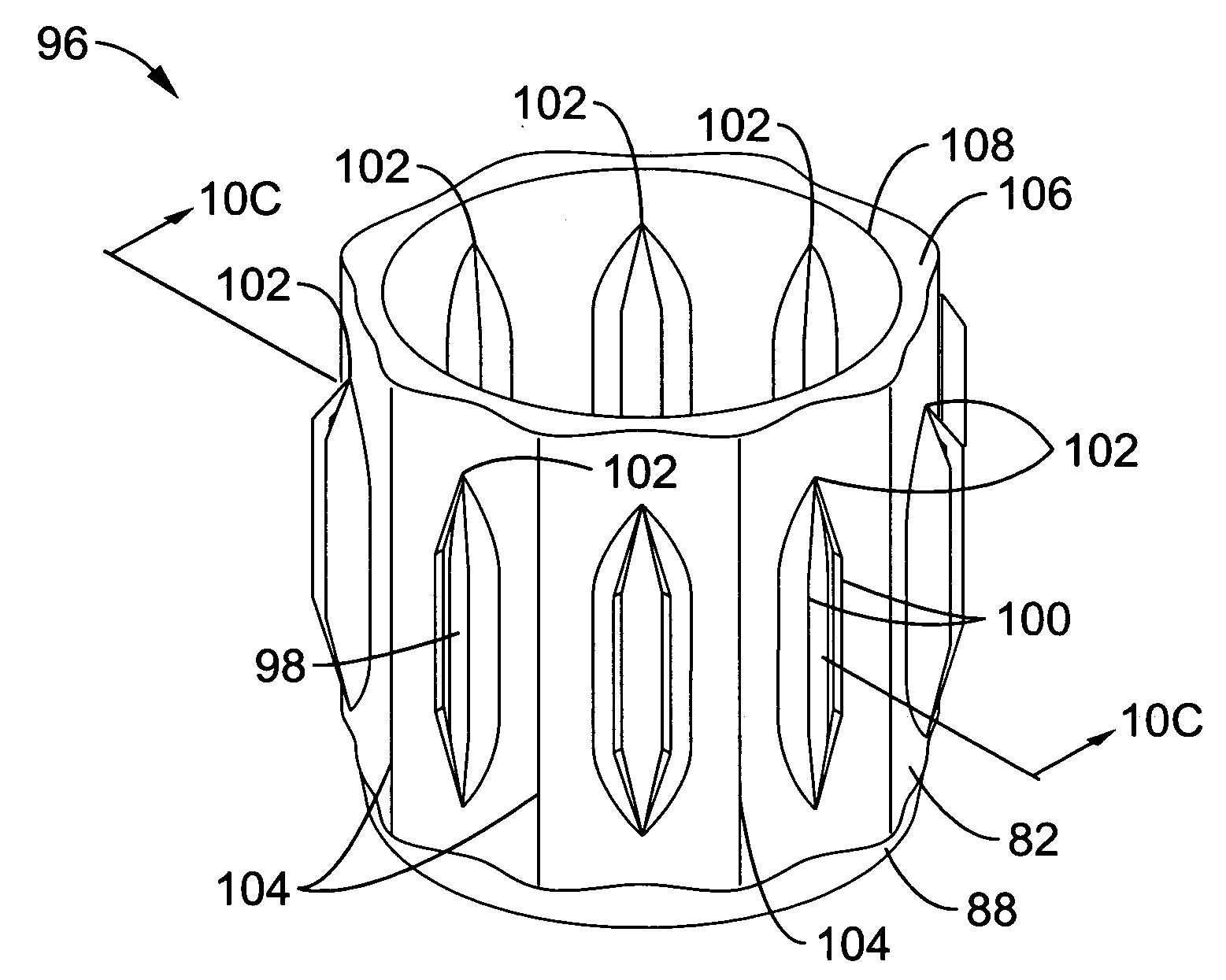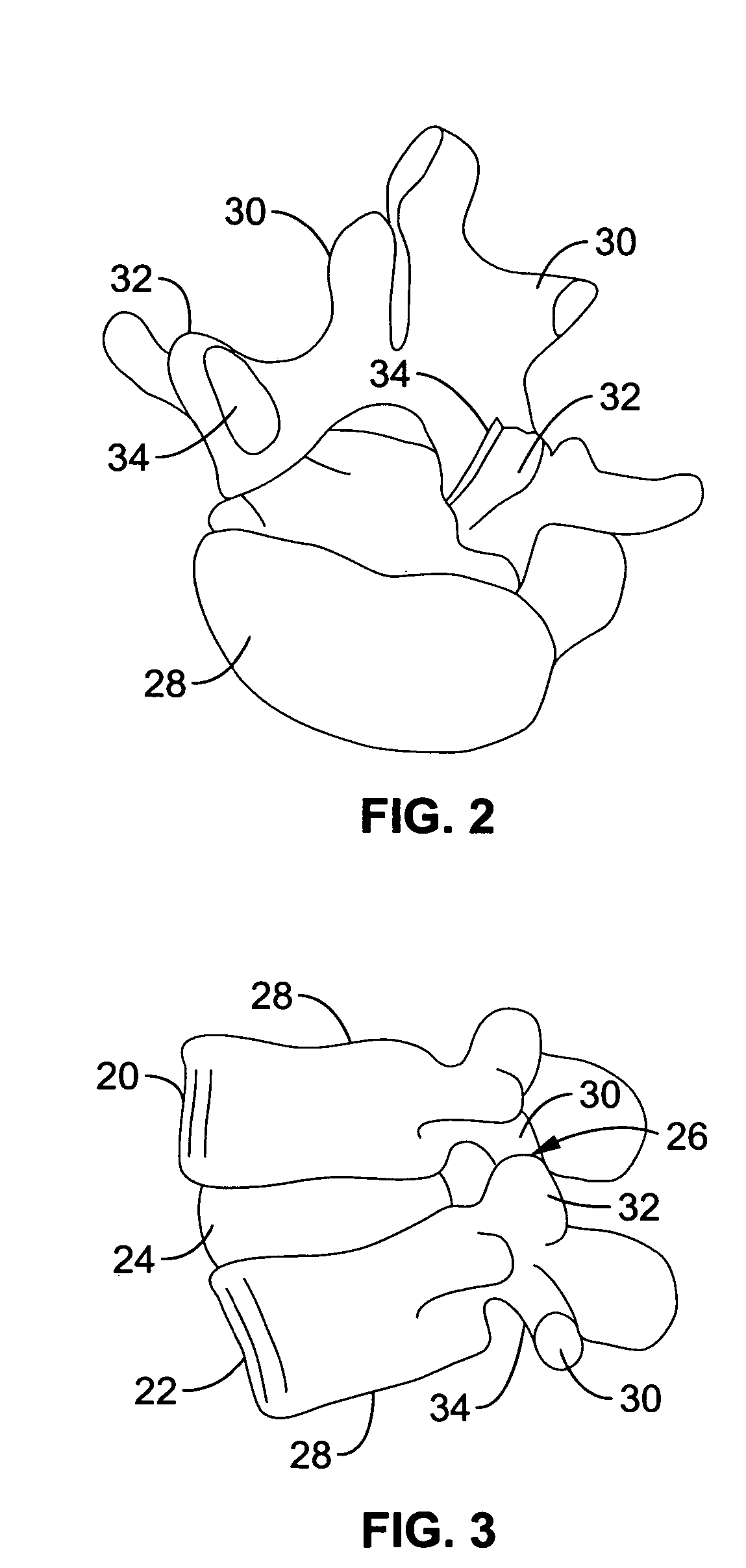Spine microsurgery techniques, training aids and implants
a technology of microsurgery and implants, applied in the field of human spinal implant systems and methods, can solve the problems of pain and disability of a large segment of the population, loss of stability, and loss of height of the intervertebral disc, and achieve the effect of enhancing safety and broad utility
- Summary
- Abstract
- Description
- Claims
- Application Information
AI Technical Summary
Benefits of technology
Problems solved by technology
Method used
Image
Examples
Embodiment Construction
[0076]Referring more specifically to the drawings, for illustrative purposes the present invention is embodied in the systems and methods generally shown in FIG. 1 through FIG. 27D. It will be appreciated that the systems may vary as to configuration and as to details of the parts, and that the method may vary as to the specific steps and sequence, without departing from the basic concepts as disclosed herein.
[0077]Referring to FIG. 1, a lateral view of the human spine 10 is illustrated showing the various regions of vertebrae: cervical 12, thoracic 14, and lumbar 16. The basic biomechanical unit of the spine, referred to as a motion segment, consists of two adjacent vertebrae 20, 22 and the three joint articular complex through which they move and are constrained in relation to one another.
[0078]Referring to FIGS. 2 and 3, the lumbar spine articulations consist of an intervertebral disc 24 located between the bodies 28 of the adjacent vertebrae 20, 22, and two facet joints 26 symme...
PUM
| Property | Measurement | Unit |
|---|---|---|
| length | aaaaa | aaaaa |
| diameter | aaaaa | aaaaa |
| outer diameter | aaaaa | aaaaa |
Abstract
Description
Claims
Application Information
 Login to View More
Login to View More - R&D
- Intellectual Property
- Life Sciences
- Materials
- Tech Scout
- Unparalleled Data Quality
- Higher Quality Content
- 60% Fewer Hallucinations
Browse by: Latest US Patents, China's latest patents, Technical Efficacy Thesaurus, Application Domain, Technology Topic, Popular Technical Reports.
© 2025 PatSnap. All rights reserved.Legal|Privacy policy|Modern Slavery Act Transparency Statement|Sitemap|About US| Contact US: help@patsnap.com



